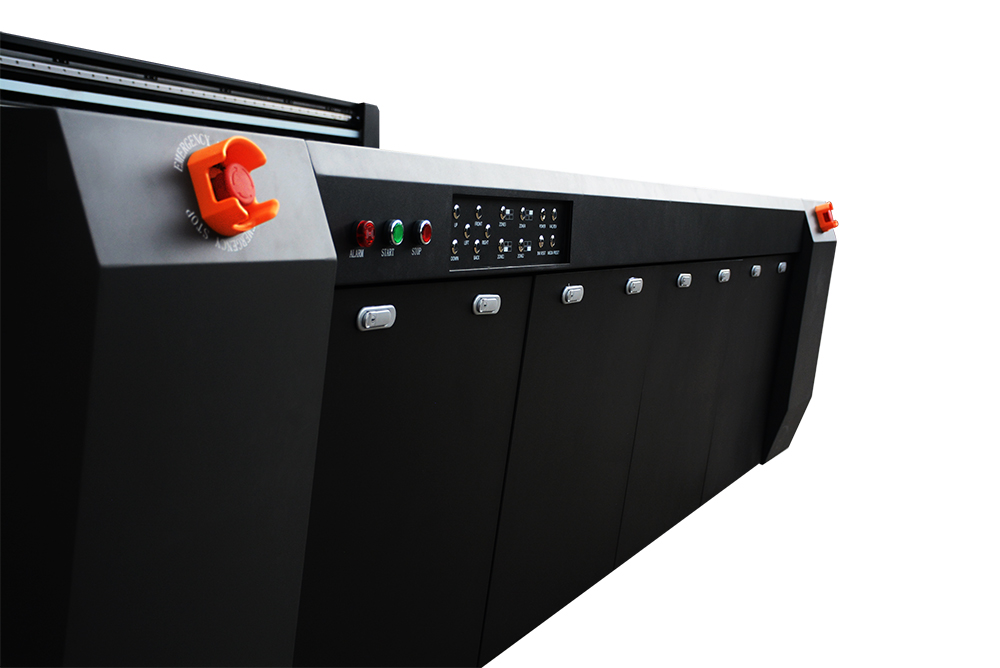What Are the Latest Innovations in UV Flatbed Printing Technology?
What Are the Latest Innovations in UV Flatbed Printing Technology?
In the world of printing technology, UV flatbed printers have emerged as a game-changer, revolutionizing the way we produce high-quality graphics on a wide range of materials. With their ability to print directly onto flat or slightly curved surfaces, UV flatbed printers have found applications in diverse industries, from advertising and packaging to manufacturing and construction. This article explores the latest innovations in UV flatbed printing technology, highlighting their key features, advantages, and how they are shaping the future of the printing industry.

Introduction
UV flatbed printing technology utilizes ultraviolet (UV) light-curable inks that dry instantly upon exposure to UV light. This process eliminates the need for solvents or drying time, resulting in faster turnaround times and higher print quality. Recent advancements in UV flatbed printers have focused on enhancing precision, speed, versatility, and cost-effectiveness, making them an attractive choice for businesses seeking to differentiate themselves in a competitive market.
Advancements in Precision and Resolution
One of the most significant innovations in UV flatbed printing technology lies in the improvement of precision and resolution. Modern UV printers now feature advanced printheads equipped with variable ink droplet technology, allowing for photo-realistic prints with exceptional detail. For instance, some printers utilize Japanese-made piezoelectric printheads, such as Ricoh’s, which can produce droplets as small as 7 picoliters (pL) and up to 35pL, enabling a resolution of up to 1200dpi x 600dpi or even 1200dpi x 1200dpi in multi-pass mode.
The positioning systems of these printers have also undergone significant upgrades. Many models now employ fixed linear gratings and precision motors to ensure accurate registration and repeatability, even when printing on large or heavy substrates. This attention to detail has made UV flatbed printers ideal for applications requiring high levels of precision, such as printing graphics on glass, metal, or acrylic surfaces.
Increased Speed and Productivity
Speed is another area where UV flatbed printers have seen remarkable progress. Newer models are designed to operate at much faster speeds than their predecessors, significantly reducing production times and enhancing overall productivity. This is particularly important for businesses that need to meet tight deadlines or handle high-volume orders.
Some advanced UV flatbed printers can print at speeds exceeding 100 square meters per hour, allowing them to churn out large-format graphics quickly and efficiently. Moreover, many printers now offer automated features, such as automatic media loading and unloading, which further streamline the production process and minimize downtime.
Expanded Material Compatibility
One of the key advantages of UV flatbed printers is their ability to print on a wide range of materials. Recent innovations have further expanded this capability, making UV printers suitable for an even broader spectrum of substrates. From flexible materials like textiles, vinyl, and leather to rigid surfaces such as glass, metal, and wood, UV printers can handle them all with ease.
This versatility is particularly valuable for businesses that require a single printing solution for multiple applications. For example, a signage company can use the same UV printer to produce banners, vehicle wraps, and even interior decorations, all without having to invest in specialized equipment for each material.
Enhanced Color Management and Consistency
Color management has always been a critical aspect of printing, and UV flatbed printers have made significant strides in this area. Modern printers come equipped with advanced color management systems that ensure consistent and accurate color reproduction across different materials and print runs. This is achieved through the use of sophisticated color profiles, calibration tools, and software that allows users to fine-tune color settings to match specific requirements.
In addition, UV inks offer a wider color gamut than traditional solvent-based inks, enabling printers to produce vibrant and eye-catching graphics that are sure to grab attention. This, combined with the instant curing properties of UV inks, results in prints that are not only beautiful but also durable and resistant to fading.
Improved Energy Efficiency and Environmental Sustainability
As environmental concerns continue to rise, UV flatbed printer manufacturers have focused on developing more energy-efficient and eco-friendly models. Many modern printers now feature LED UV curing systems, which consume significantly less energy than traditional mercury-vapor UV lamps. LED UV lamps also generate less heat, reducing the need for cooling systems and further enhancing energy efficiency.
Moreover, UV inks are generally considered more environmentally friendly than solvent-based inks, as they do not emit volatile organic compounds (VOCs) during the printing process. This makes UV flatbed printers an attractive choice for businesses looking to reduce their carbon footprint and comply with strict environmental regulations.
Integration with Smart Technology and Automation
The integration of smart technology and automation is another trend shaping the future of UV flatbed printing. Many modern printers now come with built-in connectivity features, allowing them to communicate seamlessly with other devices and software applications. This enables users to automate tasks such as job submission, file preparation, and print monitoring, significantly reducing manual intervention and errors.
Furthermore, some printers now offer advanced analytics and reporting tools that provide valuable insights into printer performance and production efficiency. These tools help businesses identify areas for improvement and optimize their printing processes for maximum profitability.
Conclusion
UV flatbed printing technology has come a long way in recent years, with advancements in precision, speed, versatility, color management, energy efficiency, and automation driving its adoption across various industries. The latest innovations in this field have made UV printers not only faster and more efficient but also more environmentally friendly and user-friendly.
As businesses continue to seek ways to differentiate themselves in a crowded market, UV flatbed printers offer a compelling solution. With their ability to produce high-quality graphics on a wide range of materials, these printers are poised to play a crucial role in shaping the future of the printing industry. As technology continues to evolve, we can expect to see even more exciting innovations in UV flatbed printing, further expanding its potential and capabilities.
